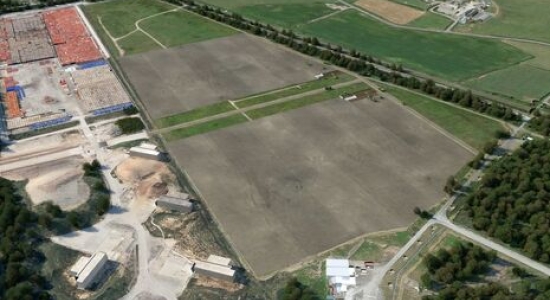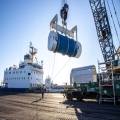Works begin on the next phase of operations to close historic trenches and vaults at the Low Level Waste Repository (LLWR) site in Cumbria.
Nuclear Waste Services (NWS), which manages the disposal of the UK’s low level radioactive waste, is carrying out important work on the final capping of legacy disposal trenches and vaults which are now full and ready for permanent closure.
Capping is a key part of the disposal lifecycle and will provide an engineered protective cover over the waste that has been disposed of in the trenches and vaults. Comprising of layers of material, totalling up to 10m thick, the cap will permanently protect people and the environment.
Work is now starting on the Southern Trench Cap Interim Membrane (STIM) which will involve placing a new membrane, or protective layer, over the legacy disposal trenches. It will also include placing other construction materials to progress towards the final cap.
Civil Engineering firm GRAHAM Construction, has been awarded a four year contract and will start work this month, with major works commencing in February 2025.
Alongside this, NWS has also completed the design of the final cap, the extensive enabling works and the rail transport arrangements that are necessary for procuring, importing and emplacing thousands of tonnes of materials, whilst complying with the conditions imposed by the Planning Authority.
This work is key to NWS’ vision to make nuclear waste permanently safe, sooner.
Jonathan Evans, Repository Site Programmes Director, NWS, said: "Placing the engineered cap over the legacy radioactive waste disposal facilities at the UK’s Low Level Waste Repository (LLWR) is a first of its kind activity for the UK. The capping work is fully integrated with our ongoing disposal operations at the site. We are very pleased the initial work is progressing and we can move forward with this key phase, working collaboratively with GRAHAM Construction. It is important that NWS caps the existing vaults and trenches to provide long-term protection of the environment for generations to come. This work is integral to our mission, to make the UK’s nuclear waste permanently safe, sooner."
Alastair Lewis, GRAHAM Contracts Director said: "This is the largest nuclear project to date for the business and will continue on from previous works undertaken during the LLWR Scheme. We recognise the critical importance of this work in ensuring the long-term environmental protection provided by the Repository and are fully committed to delivering a high-quality solution in partnership with NWS."
A key enabler of the project is having sufficient rail transport arrangements in place to move and emplace the thousands of tonnes of materials. NWS is working with Nuclear Transport Solutions (NTS), also a subsidiary of the Nuclear Decommissioning Authority (NDA), who provide specialist transport and logistics expertise. It’s an example of how the NDA group model is enabling collaboration across organisations to deliver the mission more effectively and efficiently.
Disposal of low level radioactive waste at the Repository began in 1959 with waste being placed in lined trenches at the site, which is located near the village of Drigg in West Cumbria. Disposal techniques evolved during the late 1980s and early 1990s which resulted in the construction of highly engineered concrete vaults for future disposals. This resulted in a more modern, innovative approach to the treatment and safe disposal of low level nuclear waste in specially designed metal containers, which were placed in the engineered vaults at the Repository.
NWS is a core part of the NDA group, which is responsible for keeping the UK’s former nuclear sites and facilities safe and secure as they are decommissioned.
The UK has been producing and managing nuclear waste for many decades and will continue to do so for many more. Today, nuclear power is viewed by the UK Government as essential to the low-carbon energy mix and securing our energy supply in the future. The Welsh Government also supports nuclear new build. Therefore, the ability to safely manage and dispose of nuclear waste today and for future generations is crucial.
- 99 views







